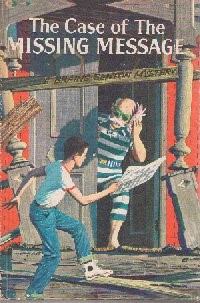 Over the years, the tremendous flood of mystery and adventure books for young readers first swept irresistibly throughout the English-speaking world, then receded, and finally dwindled down to a trickle. By 1960 most continuing series, no matter what publisher, had thinned down and begun to falter, if not drop out of print altogether. New series inaugurated around this time were usually pretty awful, as if the heart had gone out of it all.
Over the years, the tremendous flood of mystery and adventure books for young readers first swept irresistibly throughout the English-speaking world, then receded, and finally dwindled down to a trickle. By 1960 most continuing series, no matter what publisher, had thinned down and begun to falter, if not drop out of print altogether. New series inaugurated around this time were usually pretty awful, as if the heart had gone out of it all.
But in 1959 the Whitman company, whose regular line of books was sliding downhill maybe even faster than most, somehow managed to come up with one last burst of enthusiasm on the part of it's writers, editors and artists--the worthwhile result being the Brains Benton Series.
Not only did the series overcome the handicap of it's time, it even managed to thrive past another often-killing body blow; a change of authors after the first story. Author of the initial book, "The Case of the Missing Message". was written by Charles Spain Verral, a former pulp and aviation story writer whose career in spinning adventure tales began in 1935. For some reason Verral bowed out and left the scripting of the remaining five stories to George Wyatt--but in testimony to the latter's skill as a writer, if you didn't read the title page you'd pick up not a single clue in the text to this switchover.
(Editor's note: Charles Verral passed away in 1991 or 1992. In a letter to Fred Woodworth, Mr. Verral stated that, despite the names on the later books in the series, he wrote virtually the whole series.)
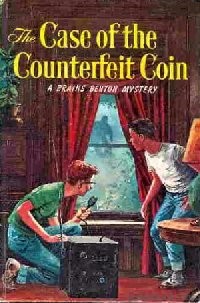 One of the interesting things that happened to series books during the period 1930-1960 was the progressive diminishing in AGE of young book heroes: some of them were, in the earlier days, over 20--a situation that was apparently unthinkable by 1960. The Mercer Boys Series by Capwell Wyckoff, started off with the brothers around ages 20 and 21; by the time the series was reprinted around 1950 the boys had lost several years apiece. Usual series protagonists were around 17 or 18, but by 1955 there was a definite trend toward even younger boy sleuths and adventurers. Brains Benton and his sidekick, Jimmy Carson, are younger still, and fall into the same age-group the Epsteins' Roger Baxter series targeted years earlier.
One of the interesting things that happened to series books during the period 1930-1960 was the progressive diminishing in AGE of young book heroes: some of them were, in the earlier days, over 20--a situation that was apparently unthinkable by 1960. The Mercer Boys Series by Capwell Wyckoff, started off with the brothers around ages 20 and 21; by the time the series was reprinted around 1950 the boys had lost several years apiece. Usual series protagonists were around 17 or 18, but by 1955 there was a definite trend toward even younger boy sleuths and adventurers. Brains Benton and his sidekick, Jimmy Carson, are younger still, and fall into the same age-group the Epsteins' Roger Baxter series targeted years earlier.
It's interesting to speculate on the reason for the particular ages of series heroes, because in a sense the age rationale is tied in with the very reason for existence of the so-called "juvenile" genre in the first place. Series of the 1920s and '30s featured characters that boy readers could look up to (to a child of eight or ten, 16 seems old indeed, but not so old that the character is in that other dimension of existence, the Man). At the same time, such a character is old enough to do most things that are necessary to a hero's adventures: he can drive a car, perhaps even a plane, go out at night, and still be believable. Even an eight-year-old is uncomfortable with the idea of an eight-year-old plane pilot (and so, of course, would the passengers!). Characters in juvenile stories needed to be older, but only so old. A story featuring a 'man' was evidently to be avoided, and actually, at the same time, men were usually excluded too from central positions in the stories by the device of making young heroes parentless, a subject already analyzed at some length in the Review.
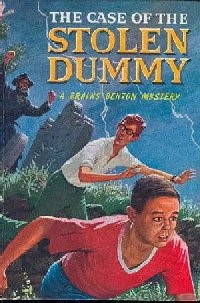 Plainly there is some kind of a deep-seated dread of the adult male either
being projected onto the young by the writers who try to create this type of story for them, or being remembered and called to the fore by the usually still-youthful writers who produce this kind of work. Given the authoritarian tendencies of adults, and particularly most adult males, it isn't too surprising that such stories would attempt to banish them from the scene; their presence interferes too weightily with the heroes' freedom.
Plainly there is some kind of a deep-seated dread of the adult male either
being projected onto the young by the writers who try to create this type of story for them, or being remembered and called to the fore by the usually still-youthful writers who produce this kind of work. Given the authoritarian tendencies of adults, and particularly most adult males, it isn't too surprising that such stories would attempt to banish them from the scene; their presence interferes too weightily with the heroes' freedom.
At any rate, as decades passed heroes got down to the 11 and 12-year- old level, and at present the old-style 17-to-20-year-old protagonist of boys' and girls' series books is all but gone.
Looking back for a moment to the Roger Baxter series again, we recall that a slight flaw here was that the heroes really NEEDED to be older; they had to get to places in a car, as they lived in a small-town setting and couldn't take a bus. In the Brains Benton stories, authors Verral and Wyatt get around this problem by fitting the boys a little better into their environment so that they hardly ever need to drive or get time off from school to carry on their adventures. The necessity of privacy and emancipation from parents' restrictions is more or less solved by making Brains' laboratory a kind of private apartment where the boys can leave projects partially completed, hide fugitives, etc.
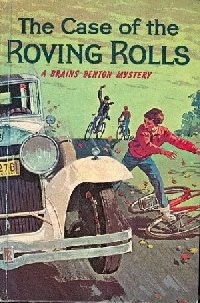 The stories are told in the first person, a rarity also among series adventures, and the style is crisp and compact:
The stories are told in the first person, a rarity also among series adventures, and the style is crisp and compact:
"I might as well explain right away that my name Is Jimmy Carson and I live at 43 Maple Street in the town of Crestwood...I still get goose pimples when I think of the terrible shrieks that came from the spooky old Madden house, 'Cut his throat! Cut his throat!' And I guess I'll never forget the man in black or the sight of that monster charging across the field at us."
At times the ironic humor in this series approaches surrealistic levels, as in this scene early in "Missing Message":
I had just raised my hand to knock when suddenly the door was yanked open and I found myself staring at a strange-looking man.
He was bald as an egg and all bent over. But the really weird thing about him was what he was wearing. He had on a blue and white striped bathing suit- the
kind men wore in the gay Nineties with pants below the knees and sleeves halfway down the arms. To top it all, he had a pair of up-to-date skin-diver's goggles over his eyes.
He gazed at me through the goggles.
'Did you bring the fish?' he asked.
'The fish!' I managed to get out. 'No...I...I came to see if you would like to take the evening paper, the Crestwood Daily Ledger'.
'Can it be read underwater?' he asked eagerly.
Creeps! That really threw me. What had I got into, anyway?
'I don't know,' I said. 'But it's a good paper. You'll like it. I'll deliver it every afternoon.'
This kind of playfulness and creativeness adds hugely to the enjoyment of the series.
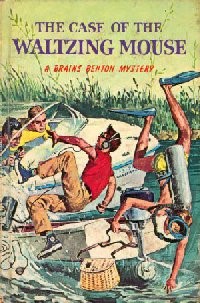 Brains Benton is, in a sense, a rather believable character. Compared to those types of young geniuses in some series who whip impossible devices together at a moment's notice and go flying off to the moon-the kind of story usually written by someone who doesn't know the first thing about science or technology of any kind- Brains is what many youthful electronics enthusiasts could have been with a little more freedom and resources. The author has
a sharp eye here for that kind of precocious amateur experimenter.
Brains Benton is, in a sense, a rather believable character. Compared to those types of young geniuses in some series who whip impossible devices together at a moment's notice and go flying off to the moon-the kind of story usually written by someone who doesn't know the first thing about science or technology of any kind- Brains is what many youthful electronics enthusiasts could have been with a little more freedom and resources. The author has
a sharp eye here for that kind of precocious amateur experimenter.
His sidekick, Jimmy, always slightly chafing under 'Brains's' (Barclay Benton's) technical superiority, looks for ways to surpass the intellectual boy. Both are on the outs with the local police chief, who resents their efforts to meddle - Such meddling consisting of trying to prove that a man the cops are holding is innocent of the charged crime, and so forth.
One of the most delightful features of the series is its pageant of vivid characters. There's an animal trainer who travels around with a pet seal named Oscar and his dancing mouse, Xenophon; there's a freaky person who hangs out in a graveyard. Believably crooked individuals are observed in their native habitat, appropriately a real - estate agency.
In "The Case of the Painted Dragon" 1961, a Japanese family appears, and from the preciseness of the writing about them it's obvious that author George Wyatt has more than a passing acquaintance with Japanese language and culture. In this particular story, a family's wealth has been wiped out by the actions of two governments in World War II: Not only did the Americans confiscate an item of jewelry that belonged to the branch of the family in Japan; the Japanese government at the same time expropriated everything the family owned in that country because its members had been trading with the Americans- certainly a believable situation in view of the penchant for hysteria seen in both governments. At the same time the last remaining members of the clan, now virtually penniless, are trying to recover their valuable necklace after its belated release by the American authorities. The aloof point of view of this story, which rises above nationalities and seemingly regards the individual as the one who really matters in the unending contention between states, was rather impressive. The truth is, there must have been thousands of persons who were not only put in jeopardy in the wartime hysteria on both sides, but hurt.
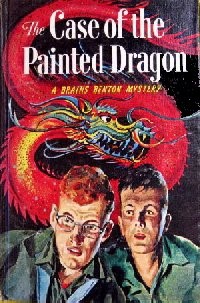 As far as series go, this one adopts the best part of the classic stance that gave such books their flair: here were youngsters, EMPOWERED. They were capable of discovering situations, exercising their minds and curiosity in order to find answers to puzzling problems. This they did only to please themselves. In certain other series at the same time, notably the Hardy Boys, the private actions of the boy detectives became subsumed into police-like agencies, the boys "cooperating" and in a sense prefiguring the absorption of the lone individual into me affairs and machinery of the state.
As far as series go, this one adopts the best part of the classic stance that gave such books their flair: here were youngsters, EMPOWERED. They were capable of discovering situations, exercising their minds and curiosity in order to find answers to puzzling problems. This they did only to please themselves. In certain other series at the same time, notably the Hardy Boys, the private actions of the boy detectives became subsumed into police-like agencies, the boys "cooperating" and in a sense prefiguring the absorption of the lone individual into me affairs and machinery of the state.
Today it would be almost unthinkable to hear of a series that featured characters solving mysteries without some kind of quasi-official status obligingly granted by the local police department, almost as if the human spirit has given up and resigned itself to the all-encompassing role of officialdom.
At the same time they exercised some responsibility- to themselves and to an abstract ideal of justice. Perhaps I make too much of the slide away from individualism, but having just read that a new version of the Hardy Boys is about to be released later in 1986, I am willing to predict that almost no trace of the privately-acting boy hero will remain. No more will any character even remotely resembling Brains Benton read his newspaper, get a whiff of some corruption or crime, and go out to do something about it. Instead it'll be:
Joe Hardy raced for the phone.
"Hardy investigations....Wow!... Okay, we'll get right on it!"
"What's up?" asked Frank asked as his brother put down the phone.
"That was the CIA," said Joe, thoughtfully. "They have word of a terrorist moving into an apartment in Bayport and they want us to put one of those new thimble-video cameras in a light fixture."
"Right!" exclaimed Frank. He sprinted for the door. "Let's go!"
Bibliographical information on the Brains Benton series is quickly related, as there were only two varieties of formats in which the books appeared. In the earlier one, which bears the imprint of Golden Press, (just another name for Whitman; the familiar thin books for young children were produced under this name), spines have a checkered pattern, and endpapers alternate the checks with line-drawings of the stylized winged lion that was Golden's trademark. In the later format, endpapers were of solid color, plain titles and no checked pattern on spines, and of course the imprint was that of the Whitman Company. (The reason for the change is somewhat obscure; just as Grosset & Dunlap had certain of its books, notably Tom Quest, re-issued under the imprint of McLoughlin Bros./Clover Books, when in reality this was just another name for G&D, Whitman's productions are under an array of names that seemingly only add confusion to the state of affairs.)
Width of the books also shrank to 5.25 inches in the Whitman imprint, from its earlier 5.75. Interior layout also kept undergoing changes from book to book, and this is perhaps the earliest series on which Whitman began printing single-color illustrations instead of the black and one-color illustrations common in its 1950s issuances. Series artists were Hamilton Greene, Walter Dey, and Al Schmidt.
The Original Series
The Case of the Counterfeit Coin & The Case of the Missing Message
were also printed in paperback as a Golden Griffin Mystery in 1969
Fan Fiction
Books by Charles E. Morgan III
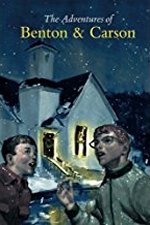
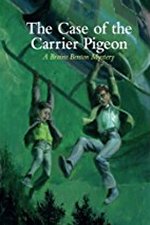
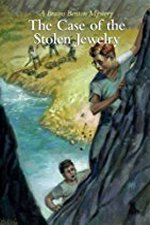
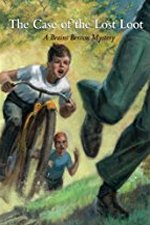
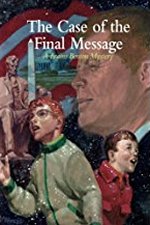
The Adventures of Benton & Carson
by Charles E. Morgan III
Enjoy this collection of six action-packed short stories featuring Jimmy Carson (Operative Three) and Brains Benton (Operative X). This edition includes three previously unpublished tales. It also includes the story of how Brains and Jimmy met and the holiday favorite, "Christmas Eve in Crestwood." The internal layout and typesetting is by Ian Regan based upon the two Brains Benton 'Golden Griffon' paperback editions. Illustrated by Shannon Stirnweis.
1: The Case of the Carrier Pigeon
by Charles E. Morgan III
While on a bicycle ride, Brains Benton (X), and his partner Jimmy Carson (Operative Three), find a wounded homing pigeon. The message that the bird was carrying is missing! The Benton and Carson International Detective Agency fly into action, and find themselves up to their eyeballs in trouble!
2: The Case of the Lost Loot
by Charles E. Morgan III
A millionaire's mansion was burglarized decades ago and the loot never recovered. An old deed may hold the clue to where the over quarter of a million dollars is hidden. Brains Benton (X), and his partner Jimmy Carson (Operative Three), get involved in the case, and they soon find themselves up to their necks in danger and intrigue.
3: The Case of the Stolen Jewelry
by Charles E. Morgan III
While collecting soda pop bottles, Jimmy Carson (Operative Three) makes a startling discovery. There are diamonds hidden inside a bottle! When he reports his find to Brains (X), the Benton and Carson International Detective Agency swings into high gear. Trying to find the jewel thieves leads them on a journey fraught with mystery and danger. Run ins with a gang of juvenile delinquents lead to some hair-raising trouble!
4: The Case of the Final Message
by Charles E. Morgan III
It's the beginning of a new year and Brains Benton (X) and Jimmy Carson (Operative Three) are just trying to enjoy a quiet break from school. But on the way home from sledding, they notice a police car at a classmate's house. The simple case of breaking and entering turns into a baffling puzzle with hidden clues. The case takes the two operatives of the Benton and Carson International Detective Agency on an adventure that takes them to Washington D.C. and back. There is danger up to the eyeballs as Brains and Jimmy get into even more of a mystery than they can even dream of. Enjoy the ride as Benton and Carson solve the case as only they can!
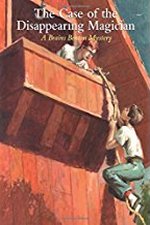
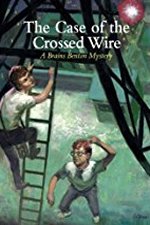
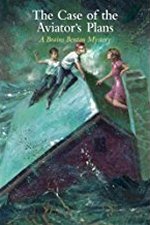
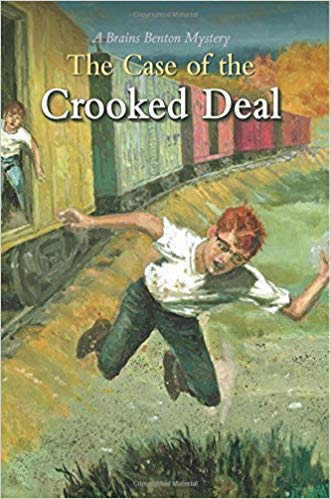
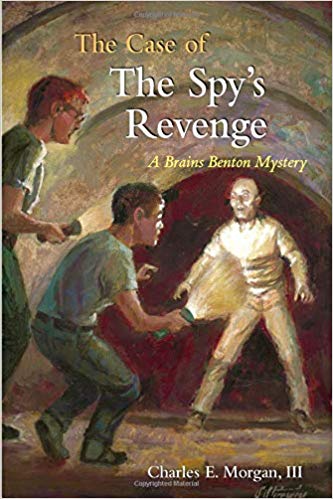
5: The Case of the Disappearing Magician
by Charles E. Morgan III
Mysterious explosions in the night get the Benton and Carson International Detective Agency on the job to investigate. The case leads Brains and Jimmy to the Crestwood Fair where they uncover a devious plot to get away with robbing the First National Bank. Join Operative Three and Operative X on this thrilling ride as the match wits with a conniving magician!
6: The Case of the Crossed Wire
by Charles E. Morgan III
In this latest Brains Benton mystery, Jimmy Carson accidently overhears two men discussing a diabolical plot over the telephone. Although he doesn't know exactly what's going on, he knows that it's bad news! He tells Brains and in no time the Benton and Carson International Detective Agency is operating in high gear! Join Operative Three and X in this exciting adventure-mystery as they match wits with a criminal element that has big plans for the upcoming election! The cover art and illustrations are by Shannon Stirweis, who was the original artist for the late 1960s paperback versions of, "The Case of the Missing Message," and "The Case of the Counterfeit Coin."
7: The Case of the Aviator's Plans
by Charles E. Morgan III
It's been raining cats and dogs for days. When the rain finally subsides, Jimmy Carson (Operative Three)and Brains Benton (X) muster all of their courage to rescue a woman who is trapped in a raging flood! This leads the firm of the Benton and Carson International Detective Agency into one of their most dangerous cases ever! Buckle in for some high flying adventure and intrigue! Once again Shannon Stirweis provides the illustrations
8: The Case of the Crooked Deal
by Charles E. Morgan III
Crestwood Junior-Senior High School is broken into and money is stolen from the French Club! Brains Benton (X) and Jimmy Carson (Operative Three) are called in on the case. They soon find themselves up to their eyeballs in trouble. Join our two private detectives in their latest mystery!
9: The Case of the Spy's Revenge
by Charles E. Morgan III
Things seem to be going well for Brains Benton and Jimmy Carson of the Benton and Carson International Detective Agency, when suddenly some strange things start to happen. Things go from bad to worse when they wind up being framed for arson! Join Operative Three and X as they try to capture one of the most dangerous criminals they've ever encountered!
Books by Scott Lockwood

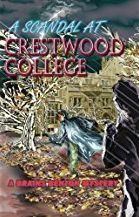

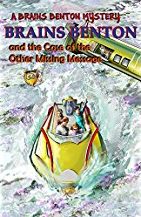
7: The Case of the Courier Cat
by Scott Lockwood
Crestwood's juvenile sleuths are at it again in this all new story in the Brains Benton series. Brains and Jimmy come to the aid of their most unlikely client - their nosy housekeeper Mrs. Ray! She needs the services of Benton and Carson to help save her sister from being blackmailed. But the case soon becomes more complicated than even Brains expects as the boys find themselves mixed up with a mysterious cat, a rival detective agency, missing pearls, a haunted house and a mad scientist. Can even the amazing genius of Brains Benton unmask the sinister mastermind behind the whole scheme? Whatever you do, don't miss this chance to find out!
8: A Scandal At Crestwood College
by Scott Lockwood
Jimmy's sister Ann is accused of stealing answer sheets and selling them to her sorority sisters! Jimmy and Brains take on one of their most cunning foes in an effort to free Ann from prison. The evidence points to the head of the sorority's ethics committee, but is everything what it appears to be? Join Jimmy and Brains as they take on one of their most dangerous cases in an attempt to unveil a sinister conspiracy aimed at launching one woman's rise to a position of unassailable power!
9: Brains Benton and The Subtraction Mystery
by Scott Lockwood
In their younger days, Barclay "Brains" Benton and Jimmy Carson formed their own detective agency and solved many crimes. But a personal tragedy resulted in Brains dissolving the agency, apparently for good. Now, years later, he heads the bionics lab of the top-secret SwiftTech Laboratories, located in Thousand Oaks, California. But, when his investigative reporter girlfriend is injured in the course of discovering the secret behind a series of mysterious bank robberies, Brains finds himself forced out of retirement to catch the mastermind behind the strange thefts. Join Brains and Jimmy once again as they try to stop a renegade scientist and the deadly device that could be used as a weapon of mass destruction!
10: Brains Benton and The Case of the Other Missing Message
by Scott Lockwood
This is the 10th novel in the Brains Benton series of mysteries and the 2nd cross-over book to feature the famous inventor, Tom Swift. The death of a scientist at SwiftTech leads the investigation duo of Brains Benton and Jimmy Carson to the mysterious CEM/Anahuac corporation, run by the ruthless Sun Erato Ohm. Joined by their new friend, Dr. Thomasina Swift, they encounter formidable obstacles ranging from street gangs to genetically engineered giants. Will Jimmy and Brains arrive at the answer in time to save Tom Swift Jr.'s girlfriend Phyllis Newton from certain death? Or will she be threatened by a woman said to have vanished into a black hole? Don't waste a minute picking up this latest volume in the Brains Benton - Tom Swift Jr. series and find out for yourself!
